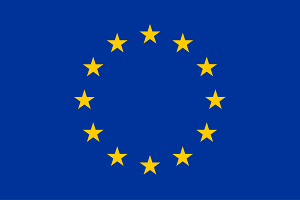
Innovative photocatalysts integrated in flow photoreactor systems for direct CO2 and H2O conversion into solar fuels.
Objectives
- The main objective of NEFERTITI is to develop an efficient photocatalytic (PC) process coupling, in a single device with both the simultaneous conversion of CO2 and H2O and the formation of C-C bonds, requiring multi-site catalysis. This novel and challenging approach for PC conversion will rely on the combination of two connected PC flow reactors, enabling the formation of fuels from a single-step process involving two reactions.
- NEFERTITI will optimise the reaction parameters of the developed catalysts, integrate them in the two PC flow reactors designed specifically for the project’s needs and then assemble them in a robust integrated device powered by sunlight and validated at laboratory scale.
General information
- Financial Framework: Horizon 2020
- Overall Budget: 4,569,127.50 €
- Period: 01/07/2021- 30/06/2025
- Fields: alternative renewable fuels from sunlight for energy, transport and chemical storage
- Website: --
NEFERTITI will develop an innovative highly efficient photocatalytic system enabling a simultaneous conversion of CO2 and H2O into solar fuels (ethanol and alcohols with longer chain such as (iso)propanol) and thus provide a breakthrough alternative to transform CO2 into valuable products for energy and transport. NEFERTITI aims to integrate novel heterogeneous catalysts (Covalent organic frameworks and metal oxides combined with metallic nanoparticles) and luminescent solar concentrators into two Photocatalytic flow reactors sourced by sunlight energy. The reaction mechanisms for the photocatalytic CO2/H2O conversion and C-C bond formation will be defined and optimised. As this has never been done before, NEFERTITI will develop a completely new way of producing such compounds in a continuous manner having a significant impact on the scientific understating of this technology. Modelling of C-C bond formation from activated intermediates will then determinate the reaction pathways, barriers and selectivity for C-C, C-O and C-H bonds. By increasing the sunlight conversion efficiency and improving light-harvesting and charge separation, NEFERTITI will overcome the remaining technological challenges, improve the competitiveness of the photocatalytic technologies and enable a carbon-neutral production of solar fuels in a single-step process as an alternative to traditional multi-step processes. Novel photocatalytic materials, optical and chemical light-harvesting components and flow reactors will be designed, developed and integrated in a system reaching a TRL4 at the end of the project. Economic and sustainability assessment throughout the entire life cycle will consider socio-economic and environmental impacts, as well as workers’ health & safety to maximize productivity and resource efficiency and minimize the risks. The consortium is composed of an experienced multidisciplinary team from EU, China and USA, supported by an international Advisory Board.

This project has received funding from the European Union’s Horizon 2020 research and innovation programme under grant agreement N° 101022202. This publication reflects only the author’s views, and the European Union is not liable for any use that may be made of the information contained therein.
